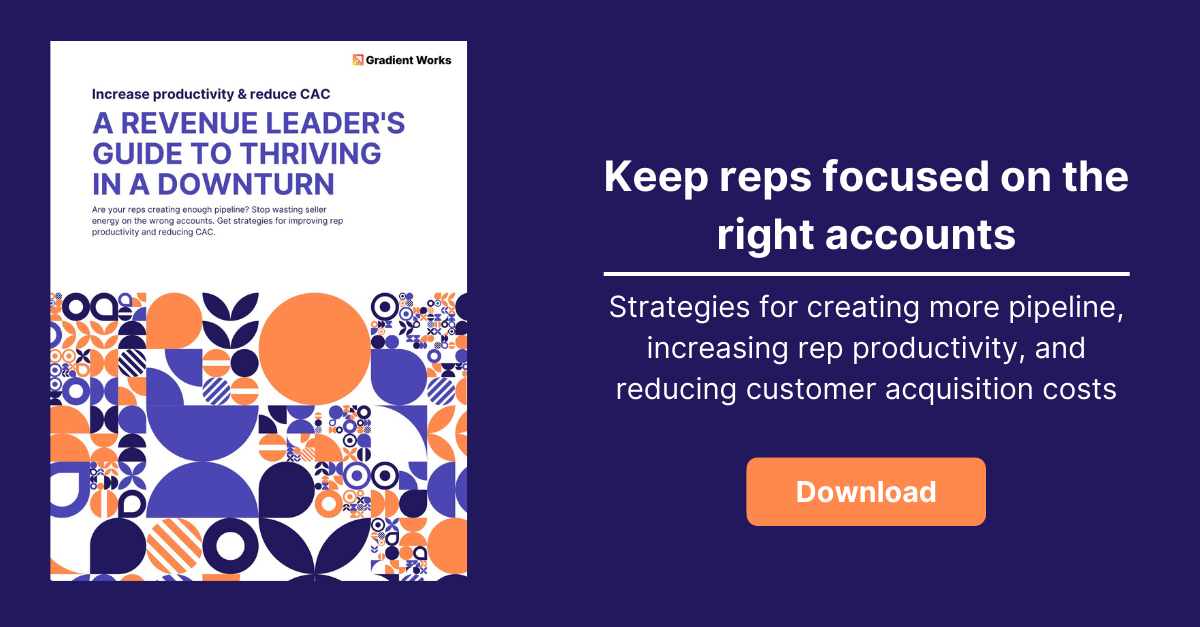Sales and marketing teams are looking for avenues for growth. Growth strategies like ABM, PLG, and going upmarket rely on timing signals to identify when prospects are in-market for a solution. But what if your company doesn’t have the budget for an intent platform like 6sense, Bombora, or similar? How do you identify the right accounts with the data you already have? Learn how to create timing signals for accounts with your existing tech stack.
Start with search behavior
Analyzing search behavior is a great way to determine prospect timing. Though primarily a marketing-owned function, you can segment top-of-the-funnel prospects based on the keywords related to your products or services.
-
Search queries: If the prospect is using specific search terms related to your products or services, or even competitors, they may be further along in the buying process. Segmenting by competitive or comparison searches highlights in-market shoppers to target. If the prospect is using broad search terms related to your industry, they may be in the early stages of research, and educational cadences/campaigns would help bring them along the journey.
-
Search volume: If the search terms have a high search volume, it may indicate that the prospect is not the only one interested in the product or service. Looking at the search terms that have a low search volume may indicate that the prospect is closer to making a purchase. More specifically, look at long-tail keywords and high-intent words like pricing, comparison, contract length, etc.
These segments are much more difficult to track on an individual prospect basis and are a great start to bringing people to your website. The traffic you’re following is anonymized, but you can begin grouping pages based on intent and build retargeted audiences for both paid search and social based on your funnel. For example, visitors to the product tour pages and/or pricing page show a higher level of intent than general blog content. Additionally, these intent signals should inform your content and SEO strategy. Building lead magnets around these topics will give the anonymous visitor something to download when they visit your site again via retargeting and moves them down the funnel as they raise their hand.
Create timing signals with website behavior
When looking at a prospect's website behavior, look for high-intent actions such as viewing specific product or service pages, filling out contact forms, multiple visits, or downloading resources related to your products or services. Below are some ways to use website behavior to determine prospect timing:
-
Time spent on site: If the prospect spends a lot of time on your website and visits multiple pages, they may be in the early stages of research and may not be ready to make a purchase yet. If the prospect visits specific product or service pages, they may be further along in the buying process and may be closer to making a purchase.
-
Pages visited: Identifying high-intent pages will help segment where a prospect is in the funnel. There are obvious conversions, such as contact forms or requesting a demo. Less direct action events, like high-intent pages, can be set up and tracked via Google Analytics.
-
Frequency of visits: If the prospect visits your website frequently over a short period, they may be actively researching and closer to making a purchase. For example, every demo request we’ve gotten so far in 2023 on the Gradient Works website has visited the website 2 or more times.
Segmenting these behaviors with your website and Google Analytics will give you a chance to create retargeting marketing campaigns as well as update a lead or account score in Salesforce to help sales teams focus on the best prospects.
Leverage social media to learn prospect timing
Social media behavior is a great indicator of interest and timing. Is a prospect actively engaging with your business or industry? Take note of social media actions such as following your company page, sharing your content, or engaging with your social media posts. The metrics you should follow include:
-
Engagement (including ad clicks): Liking or commenting on your content is a small part of the engagement actions. Sharing with colleagues and other contacts helps identify champions who may be sharing with their boss. The frequency and type of engagement can also provide insight into the prospect's buying stage. If the engagement is focused on general information or awareness content, it may indicate that the prospect is in the early stages of research. If the engagement is focused on specific product or service content, it may indicate that the prospect is further along in the buying process.
-
Follows: A prospect follow is a key indicator that the prospect wants to learn more. Though this may be an indicator of an educational step, it helps identify a previously anonymous prospect and allows you to learn more about them, such as their job title, company size, and industry.
Take a deep dive into account scores
How long does it take for a prospect to become a customer? How does their account score change during that process? Most organizations have some kind of account score. If you don’t, start here. If a score of 7+ engages with sales outreach more than any other, schedule it into the timing model. You may also have a minimum score before sales reaches out. That timing rule can ensure prospects stay in a pool as opposed to actively being worked by sales, keeping them focused on the in-market accounts. Both sales and marketing are able to tailor messaging based on those scores and agree on when certain cadences begin and end.
Identifying the right accounts for sales and marketing teams to target, even if there is no budget for intent data providers does not have to be difficult, but it is strategic. Using search and website behavior, social media engagement, and account scores can create timing signals for accounts. By analyzing these actions, sales and marketing teams can tailor their messaging and focus on the best accounts.





